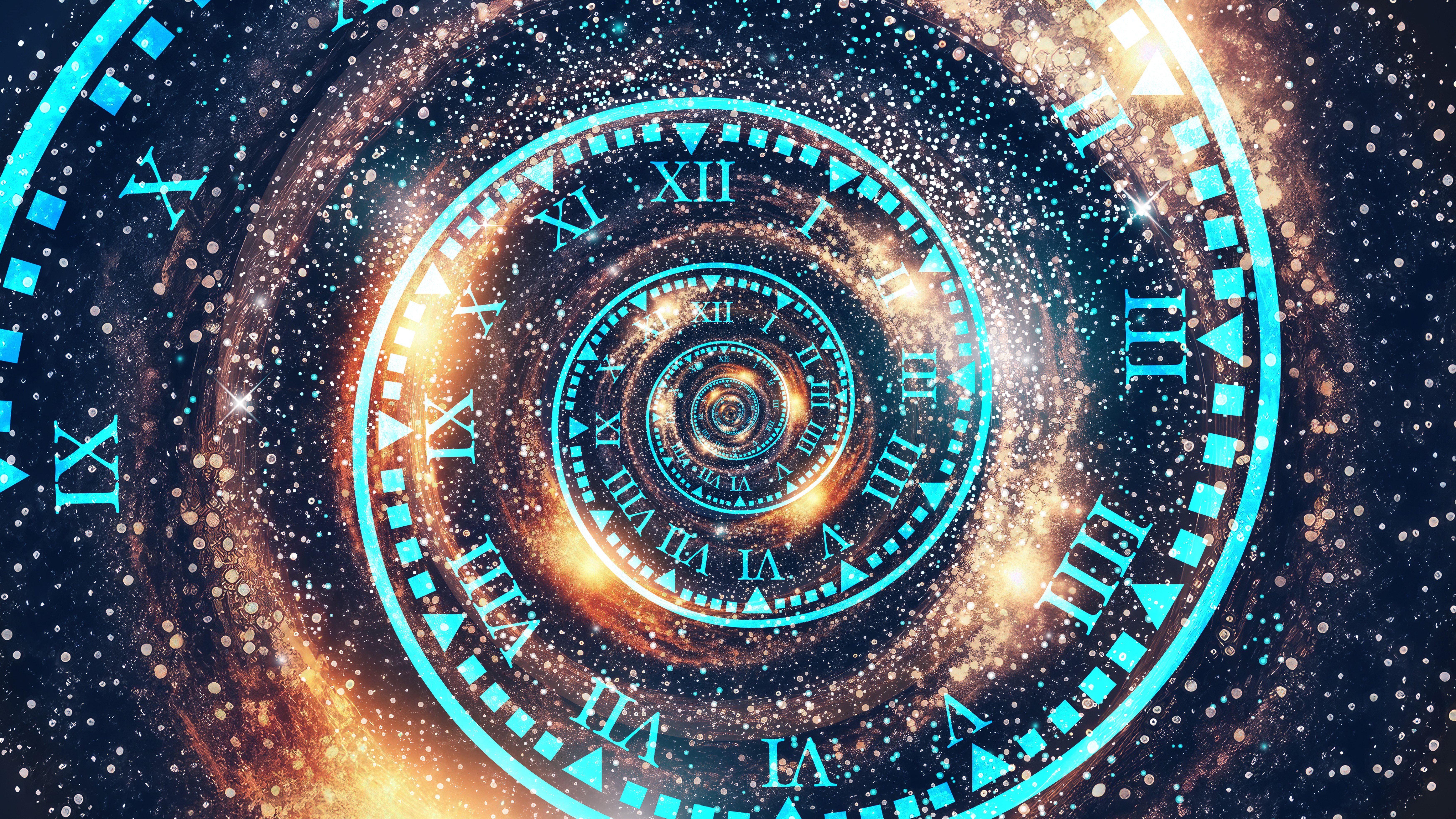
Time may not be a fundamental element of the universe but rather an illusion emerging from quantum entanglement, a new study suggests.
Time is a thorny problem for physicists; its inconsistent behavior between our best theories of the universe contributes to a deadlock preventing researchers from finding a "theory of everything," or a framework to explain all of the physics in the universe.
But in the new study, researchers suggest they may have found a clue to solving that problem: by making time a consequence of quantum entanglement, the weird connection between two far-apart particles. The team published their findings May 10 in the journal Physical Review A.
"There exists a way to introduce time which is consistent with both classical laws and quantum laws, and is a manifestation of entanglement," first author Alessandro Coppo, a physicist at the National Research Council of Italy, told Live Science. "The correlation between the clock and the system creates the emergence of time, a fundamental ingredient in our lives."
It's about time
In quantum mechanics, our best theory of the microscopic world, time is a fixed phenomenon — an inexorable, unidirectional flow from the past to the present. It remains external from the bizarre and ever-changing quantum systems it measures and can be seen only by observing changes to outside entities, such as the hands of a clock.
Related: Atoms squished closer together than ever before, revealing seemingly impossible quantum effects
Yet, according to Einstein's theory of general relativity — which describes larger objects, such as our bodies, stars and galaxies — time is interwoven with space and can be warped and dilated at high speeds or in the presence of gravity. This leaves our two best theories of reality at a fundamental impasse. Without its resolution, a coherent theory of everything remains out of reach.
"It seems there is a serious inconsistency in quantum theory," Coppo said. "This is what we call the problem of time."
To resolve this problem, the researchers turned to a theory called the Page and Wootters mechanism. First proposed in 1983, the theory suggests that time emerges for one object through its quantum entanglement with another acting as a clock. For an unentangled system, on the other hand, time does not exist, and the system perceives the universe as frozen and unchanging.
By applying the Page and Wootters mechanism to two entangled but noninteracting theoretical quantum states — one a vibrating harmonic oscillator and the other a set of tiny magnets acting as a clock — the physicists found that their system could be perfectly described by the Schrödinger equation, which predicts the behavior of quantum objects. Yet, in place of time, their version of the famous equation ran according to the states of the tiny magnets acting as a clock.
This insight is not new, but the team's next step was. They repeated their calculations twice, assuming first that the magnet clock and then the harmonic oscillator were macroscopic (larger) objects. Their equations simplified into those for classical physics, suggesting that time's flow is a consequence of entanglement even for objects on large scales.
"We strongly believe that the correct and logical direction is to start from quantum physics and understand how to reach classical physics, not the other way around," Coppo said.
Other physicists have expressed caution. Despite finding the Page and Wootters mechanism a fascinating idea for the quantum origins of time, they said it has yet to produce anything testable.
"Yes, it is mathematically consistent to think of the universal time as the entanglement between quantum fields and quantum states of 3D space," Vlatko Vedral, a professor of quantum information science at the University of Oxford who was not involved in the work, told Live Science. "However, no one knows if anything new or fruitful will come out of this picture — such as modifications to quantum physics and general relativity, and corresponding experimental tests."
Despite these doubts, building ground-up theories of time from quantum mechanics may nonetheless be a promising place to start — so long as they can be shaped to fit experiments.
"Maybe there is something about entanglement where it plays a role," Adam Frank, a theoretical physicist at the University of Rochester in New York who was not involved in the study, told Live Science. "Maybe the only way to understand time is not from some God's-eye perspective, but from the inside, from a perspective of asking what is it about life that manifests such an appearance of the world."







